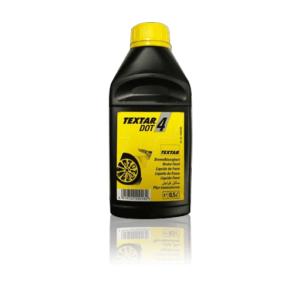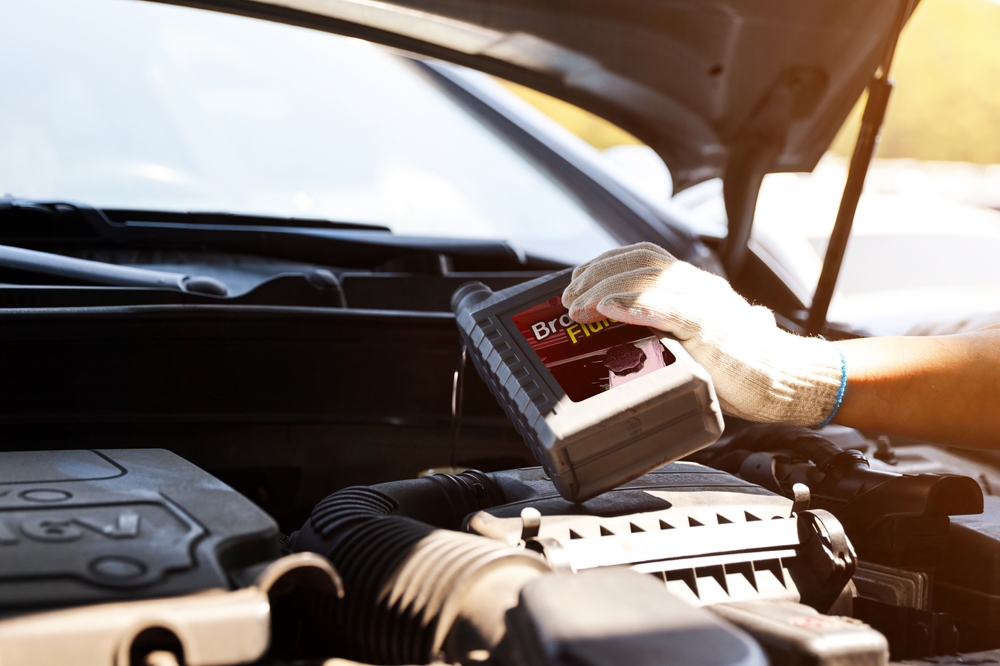Brake fluid
SELECT YOUR VEHICLE TO FIND THE RIGHT PARTS!

All you need to know about brake fluid
The parts of the brake system are the most important parts in terms of safety on roads. As in the case of the brake disk and the brake lining, the brake fluid is part of the brake system. It is one of the main work-fluid of the hydraulic drive, which directly influence the braking effect. Vehicle owners often forget to change the brake fluid. The braking action of the vehicle tends to deteriorate if the change is neglected. The brake fluid should be changed after each 40-80 thousand km. However, besides the milage, the time elapsed from the last change shall also be considered. It is a general rule that the brake fluid has to be checked and replaced as necessary after two years even if at lower milage.
For determining the change period of the brake fluid an important factor to be considered is the hygroscopic nature of the fluid. It is because the brake fluid is capable of absorbing humidity from the air. This property of the brake fluid leads to lowering the boiling point, and a mere year is enough to have a boiling point decreased by 80 °C.
When the DOT number and the boiling point increases, then the ability to absorb humidity increases too, and for instance a fluid with DOT number 5.1 has to be changed more frequently. Take care not to mix glycol and silicone-based brake fluids, because they are not compatible.
The brake fluids are sorted in DOT categories by the
US Department of Transportation, on the basis of which nowadays they belong to the following groups:
DOT 3
Use: vehicles traveling with low medium velocity
Boiling point among dry conditions: 205 °C
Boiling point in case of 3.5% water content: 140 °C
Viscosity: At a temperature of 100°C it must be below 1.5 mm2/s, while at -40 °C it must not be below 1500 mm2/s.
DOT 4
Use: high velocity vehicles
Boiling point among dry conditions: 230 °C
Boiling point in case of 3.5% water content: 155 °C
Viscosity: kinetic viscosity at -40 °C and at 100 °C is not over 1800 and not less than 1.5 mm2/s.
DOT 5.1
Use: sports cars
Boiling point among dry conditions: 260 °C
Boiling point in case of 3.5% water content: 180 °C
Viscosity: kinetic viscosity is around 1.5–900 mm2/s above zero, and below zero degree.
DOT 5
Use: racing cars and sports cars
Boiling point among dry conditions: 250 °C
Boiling point in case of 3.5% water content: 180 °C
Viscosity: kinetic viscosity is around 1.5–900 mm2/s above zero, and below zero degree.
DOT 4 6. class
Boiling point among dry conditions: 250 °C
Boiling point in case of 3.5% water content: 165 °C
Viscosity: their viscosity is not over 750 mm2/s value
This sorting is not applicable for products made from mineral base oil. Other requirements are to be complied with by these products.
Types of brake fluids:
Mineral fluids. Used primarily in the earlier generations of vehicles. Have excellent lubrication characteristics, protect the system elements from damage, do not absorb humidity, have no destructing influence on sealing elements, while their prices are lower. No longer complies with modern standards.
Glycol liquids: In modern vehicle such fluid is used primarily. They are capable of absorbing air humidity, which leads to the reduction of boiling point during the use, and it can cause also the increase of low-temperature viscosity.
Silicone liquids: The viscosity is stable, it does not depend on the temperature. They do not absorb humidity, but their lubrication features are not good either. They are expensive, and are liable to get mixed with air, therefore they cannot be used in systems having ABS.
FAQ
Look around in the help center.
How often is it necessary to change the brake oil?
The brake oil change interval can vary greatly depending on the type of car. That is why we usually recommend that when determining the replacement period, it is always worth keeping the car manufacturer's instructions in mind. It is usually necessary to change the brake fluid after driving 40,000-45,000 kilometers.
What does DOT mean in brake fluid?
The strict criteria for brake fluids are summarized in the SAEJ 1703 standard. However, the industry did not adopt the SAEJ classification, but the DOT standards developed by the US Department of Transportation, and still uses them today. The DOT practically groups brake fluids into two broad categories. Glycol-based fluids are called DOT 3 and DOT 4, and silicone-based fluids are called DOT 5. This m rating system considers several factors, including the fluid's boiling point and composition, to determine which class it belongs to. Some brake fluids may have a higher DOT rating than others, depending on how they perform under certain conditions. The lower quality DOT 3 and 4 fluids are typically best suited for everyday use in most passenger cars.
